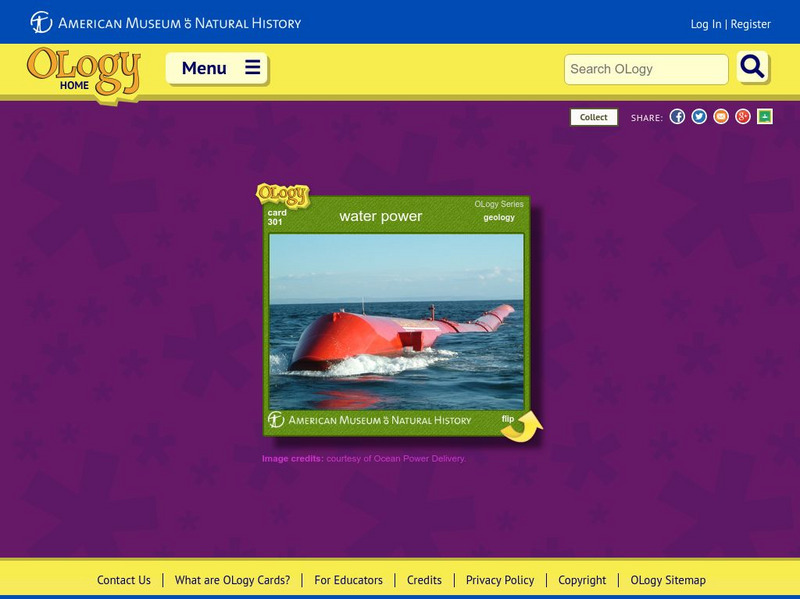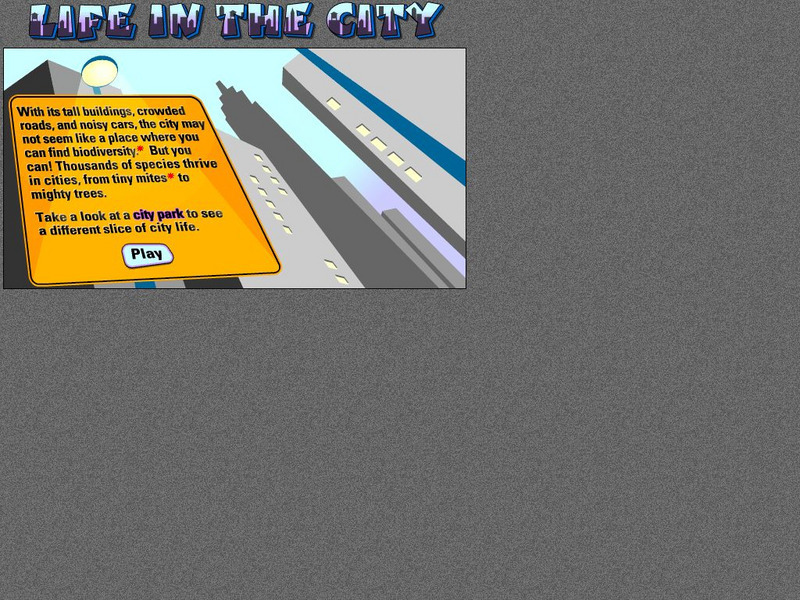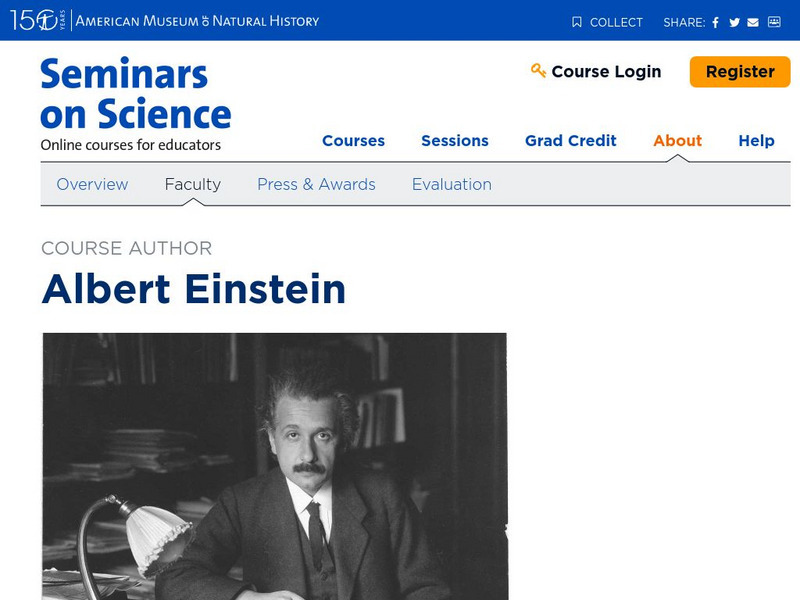American Museum of Natural History
American Museum of Natural History: Sumatran Tiger O Logy Card
OLogy cards are like virtual baseball cards about all kinds of science topics. This one is about the Sumatran tiger and it contains information about the habitat, diet, and other ecological information.
American Museum of Natural History
American Museum of Natural History: Striped Bass O Logy Card
OLogy cards are like virtual baseball cards about all kinds of science topics. This one is about the striped bass and it contains information about the habitat, diet, and other ecological information.
American Museum of Natural History
American Museum of Natural History: Water Power O Logy Card
OLogy cards are like virtual baseball cards about all kinds of science topics. This card is about power generated in hydroelectric plants from water. See if you can answer a few questions about water power when you're done reading.
American Museum of Natural History
American Museum of Natural History: Universe O Logy Card
OLogy cards are like virtual baseball cards about all kinds of science topics. This one is about the Universe and the astronomers that studied the Universe. See if you can answer a few questions when you're done reading.
American Museum of Natural History
American Museum of Natural History: St. Catherines Island O Logy Card
OLogy cards are like virtual baseball cards about all kinds of science topics. This one is about St. Catherines Island. See if you can answer a few questions when you're done reading.
American Museum of Natural History
American Museum of Natural History: A Nature and Nurture Walk in Mendel Park
Take a walk in the animated "Mendel Park" to discover which traits are genetic and which are a combination of genetics and upbringing.
University of Florida
Florida Museum of Natural History: Ichthyology: Fish Groups
Provides information on, and photographs of, the primitive fish classes. Discusses the Superclass Agnatha, the Class Chondrichthyes, and the Osteichthyes. Very interesting, with lots of pictures!
American Museum of Natural History
American Museum of Natural History: O Logy: The Amazing Mundo
Introduction, in comic strip format, to a selection of minerals and rocks that are used to make everyday objects, such as glass, aluminum foil, coins, and computer chips.
American Museum of Natural History
American Museum of Natural History: O Logy: What's the Big Idea? Earth
Find an overview of the Earth and some of the approaches scientists take in studying it, in this click-through series of short perspectives on the topic.
American Museum of Natural History
American Museum of Natural History: Jade O Logy Card
Investigate some facts about jade by reading this interactive Ology card then answering some questions.
American Museum of Natural History
American Museum of Natural History: O Logy: Stuff to Do: Edible Earth
Take a look at the layers that make up our Earth: inner core, outer core, mantle, and crust. Then have fun making a model of the Earth's interior that you can eat up.
American Museum of Natural History
American Museum of Natural History: O Logy: Life in the City
Biodiversity can be found in many places, including city parks. At this OLogy learning game site, players use a magnifying glass to find organisms that live there and also learn something about how each organism relates to others nearby.
American Museum of Natural History
American Museum of Natural History: O Logy: What's the Big Idea? Biodiversity
Find information about diversity among genes, species, and ecosystems that helps answer questions about the importance of biodiversity and how we can save species from extinction.
American Museum of Natural History
American Museum of Natural History: O Logy: What's the Big Idea? Genetics
Find an overview of genetics--the science of genes--in a click-through series of short perspectives on the topic.
American Museum of Natural History
American Museum of Natural History: O Logy: Stuff to Do: Mint Your Own Coin
The information on coins tells us a lot about the national identity of the country where it was made. Learn about the language and symbolic content of coins by creating one of your own that communicates something about your personal...
American Museum of Natural History
American Museum of Natural History: O Logy: What's the Big Idea? Water
Illustrated article that explains why all living things need water.
American Museum of Natural History
American Museum of Natural History: O Logy: Beyond T. Rex
Launch this OLogy link to find a dinosaur cladogram, an illustration that organizes dinosaurs into groups based on the unique characteristics they share, like a three-toed foot.
American Museum of Natural History
American Museum of Natural History: O Logy: What's the Big Idea? Astronomy
An introduction to key concepts about the science of astronomy. With interactive flash cards that open in new windows to help you learn more.
American Museum of Natural History
American Museum of Natural History: O Logy: If Rocks Could Talk: Obsidian
A simple explanation of how obsidian rock is formed.
American Museum of Natural History
American Museum of Natural History: O Logy: If Rocks Could Talk: Granite
A simple explanation of how granite rock is formed.
American Museum of Natural History
American Museum of Natural History: O Logy: If Rocks Could Talk: Limestone
A simple explanation of how limestone rock is formed.
American Museum of Natural History
American Museum of Natural History: O Logy: If Rocks Could Talk: Sandstone
A simple explanation of how sandstone rock is formed.
American Museum of Natural History
American Museum of Natural History: Ology: Moving Mammals
Students explore the different ways mammals move by observing them walk, hop, gallop, swim and swing in animations. Facts about habitat and structure are also included in these animations.
American Museum of Natural History
American Museum of Natural History: Profile: Albert Einstein
Read about the life and work of Albert Einstein, including details from his childhood and what he said about life just before he died.





















